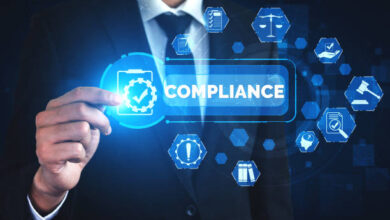How Organizations can Evade the Deepfake Voice Clone Fraud?

Deepfake is one of the most rapidly advancing technologies today. Artificial intelligence (AI) creates synthetic or overlay pictures, films, or voice recordings using existing photos, videos, or voice recordings. The word “deepfakes” comes from deep learning (a sort of machine learning). As the AI technology that powers it develops, the technology has witnessed a precipitous growth in use.
That robotic droning, which was formerly operated by an operator using keys and pedals, has developed into artificial intelligence-powered synthetic voices that are unrecognizable from the genuine thing. Audio engineers utilize speech synthesis technology to imitate the words of podcast presenters or voice actors. They can also add new information to content without recording a word because the technology is so realistic and accessible now.
Deepfakes Most Commonly Take the Following Shapes in Exercise:
This technology is powered by machine learning. It can create a convincing film of someone engaging in acts that have never happened in real life. Deepfakes come in a variety of shapes and sizes in practice.
- Face re-enactment- An advanced system is utilized to modify the aspects of a genuine person’s face
- Face generation- is the process of employing powerful software to construct a totally new appearance from information collected from a large number of real-life faces. As a result, the picture does not accurately portray a real person.
- Speech synthesis– is an advanced software utilized to reproduce a person’s words in speech processing.
Read: Brand Strategies Applied by BMW, Mercedes And Toyota to Scale Up

Business Opportunities with Deepfakes
Deepfakes may be a great way to make money, especially in the media and entertainment industry. Deepfake technology, for example, may resurrect historical figures and have them converse with the audience. In a film, it can alter actors’ ages or modify their voices to make them sound younger or older. It may also improve the immersion of video games by allowing players to immerse themselves in the action. However, copyrights, private details, legal contracts, and user notifications must all be in place in each circumstance.
Risks To Businesses
Deepfakes may harm a company’s reputation just as they can harm an individual. However, the most visible and arguably most concerning risk that new technology poses to enterprises is its ability to aid criminals in committing fraud. Fraudsters can impersonate anybody, including those authorized to authorize payments from the firm. In addition, they can take advantage of weak internal systems and steal potentially large quantities of money. The schemes are simply more advanced variations of phishing, such as Business Email Compromise frauds, and are far more difficult to detect.
Next-Gen Security Meets Next-Gen Phishing
Regular, non-deepfake phishing schemes continue to be extremely successful and popular. It targets up to 85 percent of enterprises. Deepfake audio hackers can evade the most mythical of cybersecurity protections. The corporate VPN is one of the main reasons why voice phishers pose such a serious danger to the big-money world of business security.

The overwhelming of complex malware and viruses can be shielded from your computer network. You should update the VPN software regularly to keep up with new threats and virus varieties. However, AI-generated phone conversations rely exclusively on human mistakes, gullibility, and trust. As a result, they are possibly deadly.
Read: The Amazing Secret of API Monetization Strategy
When you realize that even the smartphones, we have permanently clasped in our hands are not as safe as we think, it is easy to understand how cyber thieves may get past our protections. As a result, it stands to reason that the solution to protecting our privacy and vulnerability from deepfake audio might come in the shape of AI technologies particularly designed to detect it. Scientists are developing complicated and far-reaching algorithms capable of learning human speech patterns and quirks. Moreover, capable of detecting deepfake audio files.
They can incorporate an anti-voice cloning security system. And later on, project them to become common in the next years by looking for ‘abnormalities’ in voice and instantly matching the recordings with legitimate speech files. In essence, security devices in the coming years will be clones of the same AI technologies that criminal hackers use to deceive their victims.
Experts also want to stress the need of taking practical actions to protect ourselves against deepfake audio frauds. Simply hanging up and calling the number again is one of the simplest and most successful methods to detect a deepfake scam. The disposable VOIP account recognizes a bulk of deepfake frauds. Then use it later too, contact victims on behalf of the hackers. Consumers should be able to determine whether or not they were speaking with a live person by calling back.
Computer vision powers this technology. It can create a compelling film of someone committing an act that has never actually happened.
Read: Understanding Amazon Web Services
Steps That Firms May Take to Mitigate Their Risks
Businesses would be wise to take some basic and proactive actions to limit the danger of falling victim to deepfake-based frauds in light of this sophisticated threat. These include
- Providing training to employees, particularly those who work in jobs involving money transfers, outlining the hazards presented by deepfakes and how to spot them;
- Tightening compliance processes around payment authorization. As an illustration:
- Requesting all payments in writing using business email accounts, not over the phone;
- For higher payments shall require multiparty authorization.
- Creating a strong “no exceptions in any situation” culture for adhering to compliance standards.
- Consider investing in detecting technologies to filter communications for possible deepfake technology usage; and
- Ensure that your insurance policy covers damages caused by deepfake-based fraud.
Conclusion
Governments should implement national cybersecurity strategies and conduct in-depth analyses of their requirements and competitive advantages. The same is true in the private sector: businesses, whether small, medium, or big, must invest in danger assessment and expertise.
To be effective, initiatives like the CAI’s standard architecture will need widespread adoption, which will take time. For the time being, leaders must focus on minimizing their organization’s attack surface and disseminating the word that criminals using cloned voices are looking for victims.
Related articles you might be interested in:
Business Outsourcing Services: What Are the Best Services to Outsource?
5 Reasons Why You Should Get Your Business Notarized
Easiest Ways to Get a Full Office Full-Service Virtual Office




